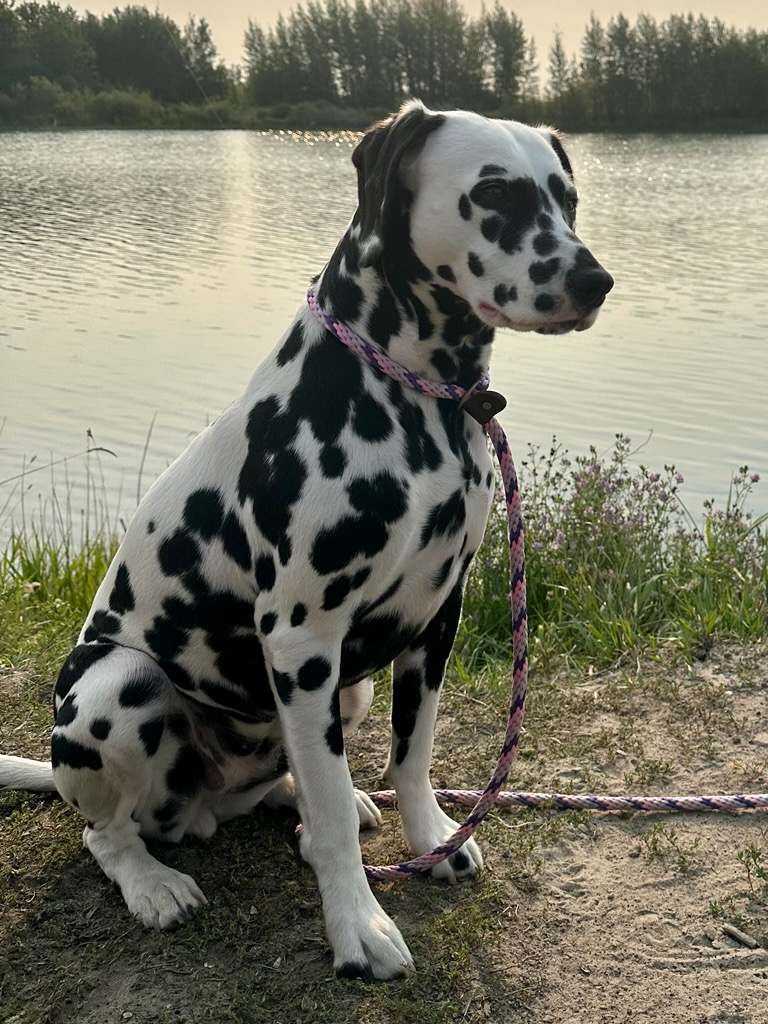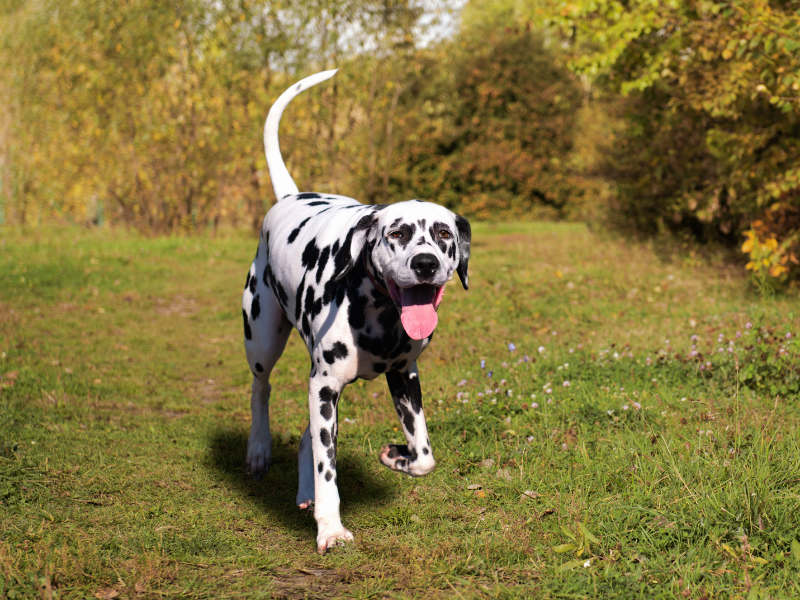With their iconic spots and boundless energy, Dalmatians have long been beloved as household pets and loyal companions. However, what if I told you that the dalmatian breed almost faced extinction?
Originally bred as carriage dogs, Dalmatians were in high demand during the early 19th century. Their unique appearance and natural athleticism made them popular choices for accompanying horse-drawn carriages. However, as technology evolved and the need for carriage dogs diminished, the dalmatian breed faced an uncertain future. It was only through dedicated efforts by breed enthusiasts and responsible breeding practices that the breed was saved from the brink of extinction. Today, the dalmatian breed continues to thrive, though with a much-reduced population compared to its heyday.

What Happened to the Dalmatian Breed: A Look into the Evolution and Challenges
Dalmatians have long been adored for their unique coat pattern and charismatic personalities. However, there have been significant changes in the Dalmatian breed over the years, leading to concerns among enthusiasts and potential owners. In this article, we will delve into the history, breeding practices, health issues, and current status of the Dalmatian breed. Join us as we uncover what has happened to this beloved dog breed.
The Origins of the Dalmatian: Tracing the Roots
The history of the Dalmatian breed can be traced back centuries, with its origins shrouded in mystery. One theory suggests that these distinctive dogs traveled alongside nomadic tribes, serving as their companions and guardians. Another theory points to their association with the region of Dalmatia, in modern-day Croatia, where the breed was said to have developed. Regardless of their exact origins, Dalmatians became popular in England during the 18th century and soon gained recognition as carriage dogs.
These early Dalmatians were valued for their endurance, intelligence, and affinity for horses. Their characteristic spotted coat served practical purposes, too. The black or liver spots on a white background made them highly visible at night and helped to deter potential threats. The breed’s popularity soared, and Dalmatians were sought after by aristocrats, fire departments, and those involved in the horse-drawn carriage industry.
However, the breed’s journey wasn’t without its challenges. Changes in transportation and the decline of horse-drawn carriages meant fewer opportunities for Dalmatians to fulfill their traditional roles. Additionally, the breed faced issues related to health and overbreeding, leading to further changes in the Dalmatian we know today.
Breeding Challenges and the Decline in Health
Breeding practices have played a significant role in shaping the current state of the Dalmatian breed. In the early days, selecting dogs for specific traits, such as spotting patterns or working abilities, took precedence. However, as demand for Dalmatians grew, irresponsible breeding practices emerged. This led to an increase in genetic health issues, including deafness.
Deafness is common in Dalmatians, with some estimates suggesting that up to 30% of the breed is affected. This hereditary condition is often linked to the piebald gene, which gives Dalmatians their signature coat. Unfortunately, breeding for certain spotting patterns without considering the underlying genetic factors contributed to the prevalence of deafness in the breed.
In recent years, responsible breeders and organizations have made significant efforts to address these health concerns. By implementing stringent breeding practices and encouraging health testing, they aim to reduce the incidence of deafness and improve the overall well-being of Dalmatians. Collaborative studies and advancements in genetic testing have also provided valuable insights into the breed’s health and allowed breeders to make more informed decisions.
The Modern Dalmatian: Challenges and Adaptations
In the modern era, Dalmatians face a new set of challenges. Changes in societal preferences, lifestyle trends, and the rise of designer breeds have impacted the popularity of Dalmatians. The breed’s distinct appearance and energy levels may not suit everyone’s lifestyle, leading to a decline in demand.
Furthermore, the surge in backyard breeding and puppy mills has also affected the Dalmatian breed. Unethical breeders prioritize profit over the health and well-being of the dogs, often resulting in poorly bred Dalmatians with various health issues. This, in turn, has tarnished the reputation of the breed and created a cycle of ongoing challenges.
Despite these difficulties, dedicated Dalmatian enthusiasts and responsible breeders continue to champion the breed and work towards its preservation. They emphasize the importance of education, responsible ownership, and supporting reputable breeders who prioritize the health and welfare of these captivating dogs.
Dalmatians and Their Place in Our Hearts: A Bright Future Awaits
While the journey of the Dalmatian breed has been marked by challenges, it is important to recognize the positive steps being taken. Dalmatians still possess their inherent charm, intelligence, and loyal nature, making them delightful companions for the right owner.
To ensure a bright future for the Dalmatian breed, it is vital for prospective owners to do their research, seek out responsible breeders, and prioritize the well-being of these dogs. Supporting organizations dedicated to the health and preservation of the breed, such as the Dalmatian Club of America, can also make a difference.
The story of the Dalmatian breed is one of resilience and adaptation. By understanding its history, acknowledging the challenges faced, and working together to prioritize responsible breeding and ownership, we can ensure that the Dalmatian remains a beloved and cherished member of the canine world for generations to come.
Key Takeaways: What Happened to the Dalmatian Breed?
- The popularity of the Dalmatian breed skyrocketed after the release of the Disney movie “101 Dalmatians.”
- Overbreeding to meet the high demand led to health problems and genetic issues in Dalmatians.
- Many Dalmatians ended up in shelters or with rescue groups due to abandonment or neglect.
- Breeders and organizations are now working to promote responsible breeding and educate potential owners about the breed’s needs.
- Dalmatians still make wonderful pets, but it’s important to choose a reputable breeder or consider adopting from a rescue or shelter.
Frequently Asked Questions
Here are some frequently asked questions about the dalmatian breed and its history:
Why are dalmatians associated with firehouses?
Dalmatians became associated with firehouses in the past because they were known for being excellent carriage dogs. Before motorized fire engines, horses were used to pull the fire carriages, and dalmatians were often kept alongside the horses. Their natural affinity for horses made them great companions during fire calls, and their alertness and protective instincts helped keep the horses calm in chaotic situations. Dalmatians also served as guard dogs for the firehouse and protected the valuable equipment.
Although modern fire engines no longer rely on horse-drawn carriages, the tradition of dalmatians in firehouses continues as a symbol of their historical role and loyalty.
Are dalmatians born with spots?
No, dalmatian puppies are not born with spots. They are actually born with plain white fur, and their spots begin to appear within a few weeks. As they grow, their spots continue to develop and become more distinct. By the time they are a few months old, most dalmatians will have their iconic spots, although the pattern and density of spots may vary from one dog to another.
It’s also important to note that dalmatians are not the only breed with spots. There are other breeds, such as the English setter and the Australian cattle dog, that also have spots, but dalmatians are known for having the most distinctive and recognizable spotting pattern.
Why are dalmatians used in movies and cartoons?
Dalmatians have been popular in movies and cartoons for their distinctive appearance and charming personality. Their unique spots and elegant build make them visually appealing and easily recognizable on screen. They also have a reputation for being friendly, playful, and loyal, which makes them suitable for various roles in storytelling.
Their association with firefighters and firehouses also adds to their appeal in movies and cartoons, as it portrays them as courageous and heroic characters. From classic films like “101 Dalmatians” to animated series like “Paw Patrol,” dalmatians continue to capture the hearts of audiences of all ages.
Do dalmatians have any health issues?
While dalmatians are generally healthy dogs, they are known to have a higher risk of certain health issues compared to other breeds. One of the most well-known health concerns in dalmatians is their predisposition to urinary stones. This is due to a genetic trait that affects their ability to metabolize uric acid.
To mitigate this risk, it is important for dalmatians to have a balanced diet and access to plenty of fresh water. Regular veterinary check-ups and monitoring of their urine pH can help prevent or address any potential urinary issues. It’s also recommended to consult with a veterinarian who is familiar with the breed for additional guidance on proper care and preventative measures.
Are dalmatians suitable for families with young children?
Dalmatians can be great family pets when properly socialized and trained. However, it’s important to note that they have high energy levels and require regular exercise and mental stimulation. They thrive in an active environment where they can participate in family activities and receive adequate exercise.
When introducing a dalmatian to a household with young children, it is essential to teach both the dog and the children how to interact safely and respectfully. Supervision is crucial, especially during playtime, to ensure the well-being of both the dog and the children. Early training and positive reinforcement techniques can help establish good behavior and prevent any potential issues.

The truth about Dalmatians | Beautiful dog breed
Summary
So, what happened to the dalmatian breed? Well, their popularity soared after the release of a certain famous movie. However, this led to overbreeding and health issues in the breed. Many dalmatians ended up in shelters because people didn’t realize how much care they require. It’s important to research and understand a breed’s needs before bringing one home. Remember, adopting from a shelter is a great way to give a dalmatian a second chance at a loving home.
In recent years, efforts have been made to promote responsible breeding and educate potential owners. Breed clubs and organizations are working to improve the health and temperament of dalmatians. If you’re thinking about getting a dalmatian, make sure you choose a reputable breeder or consider adoption. With the right care and love, the dalmatian breed can once again thrive and find their place as beloved family pets.
